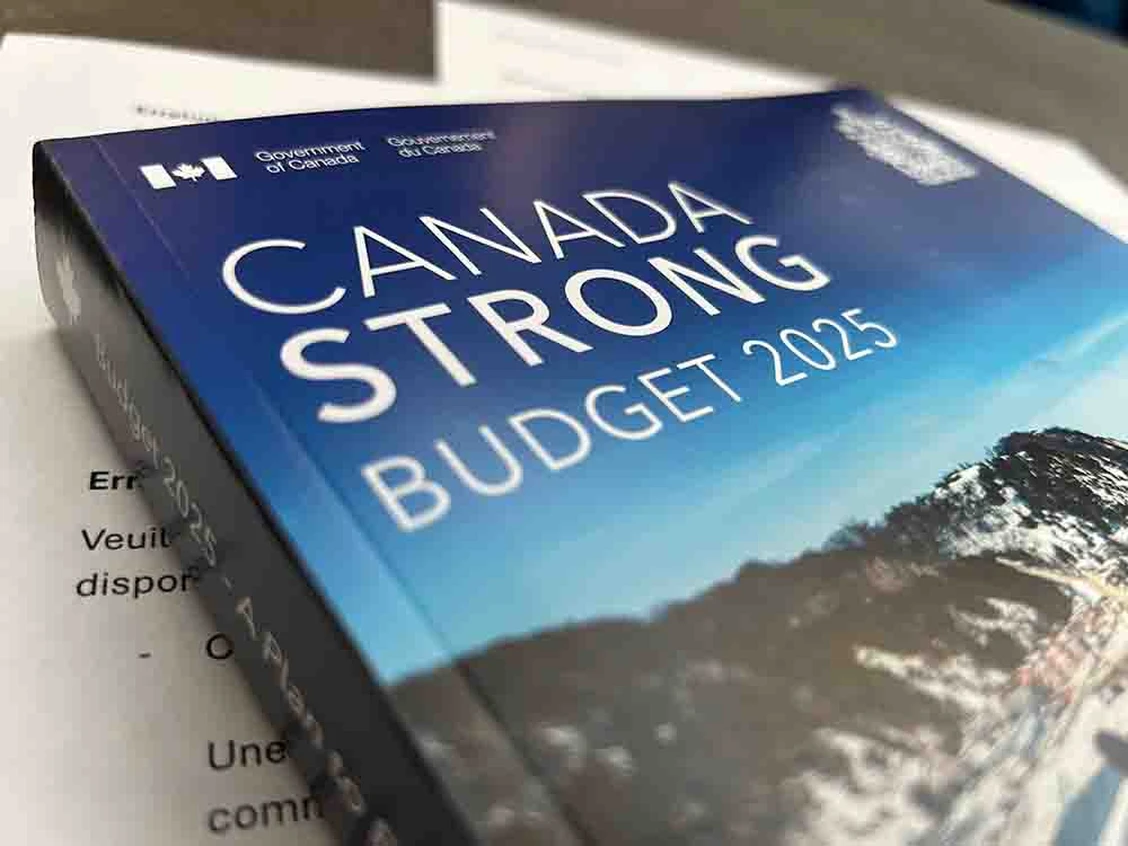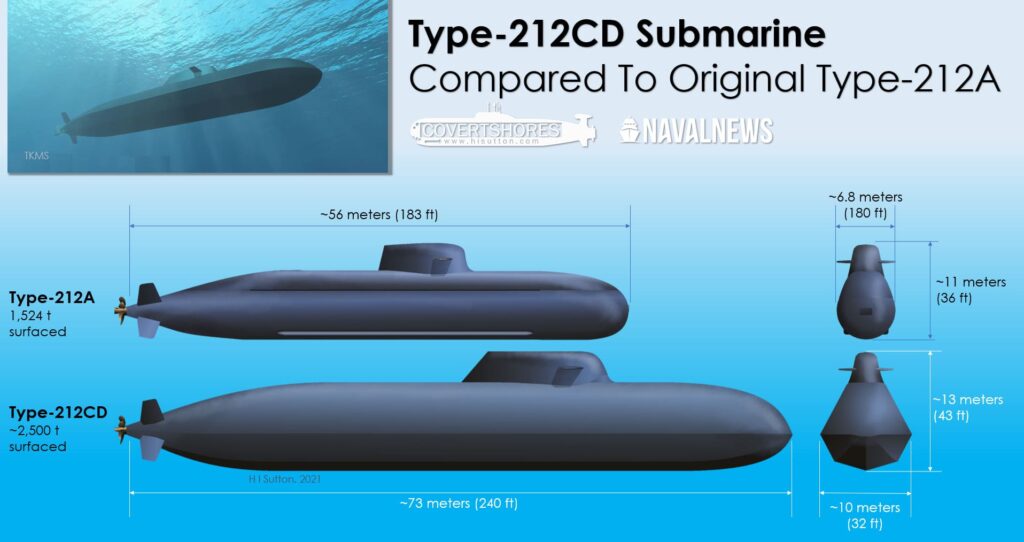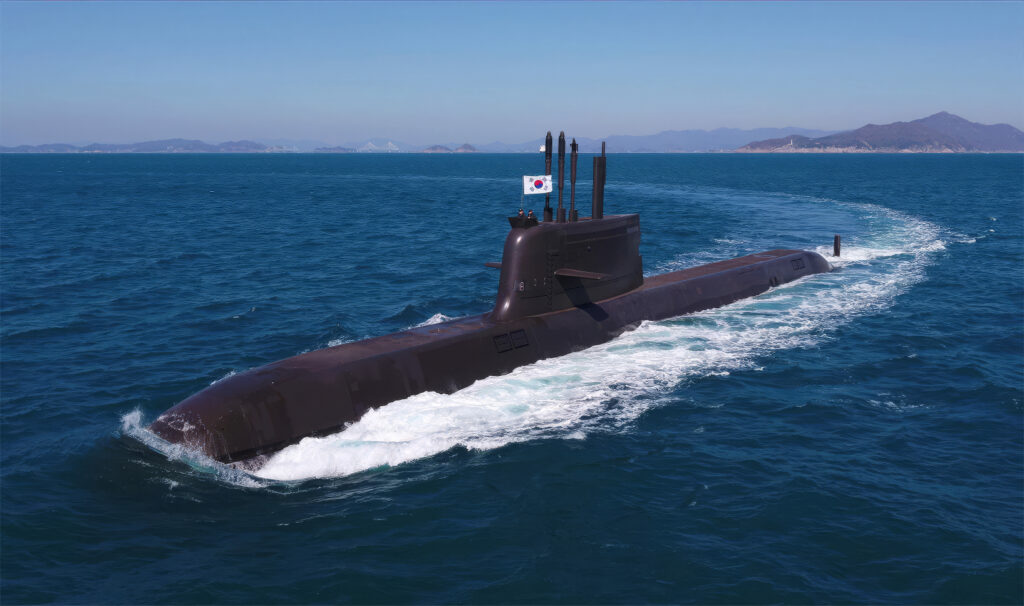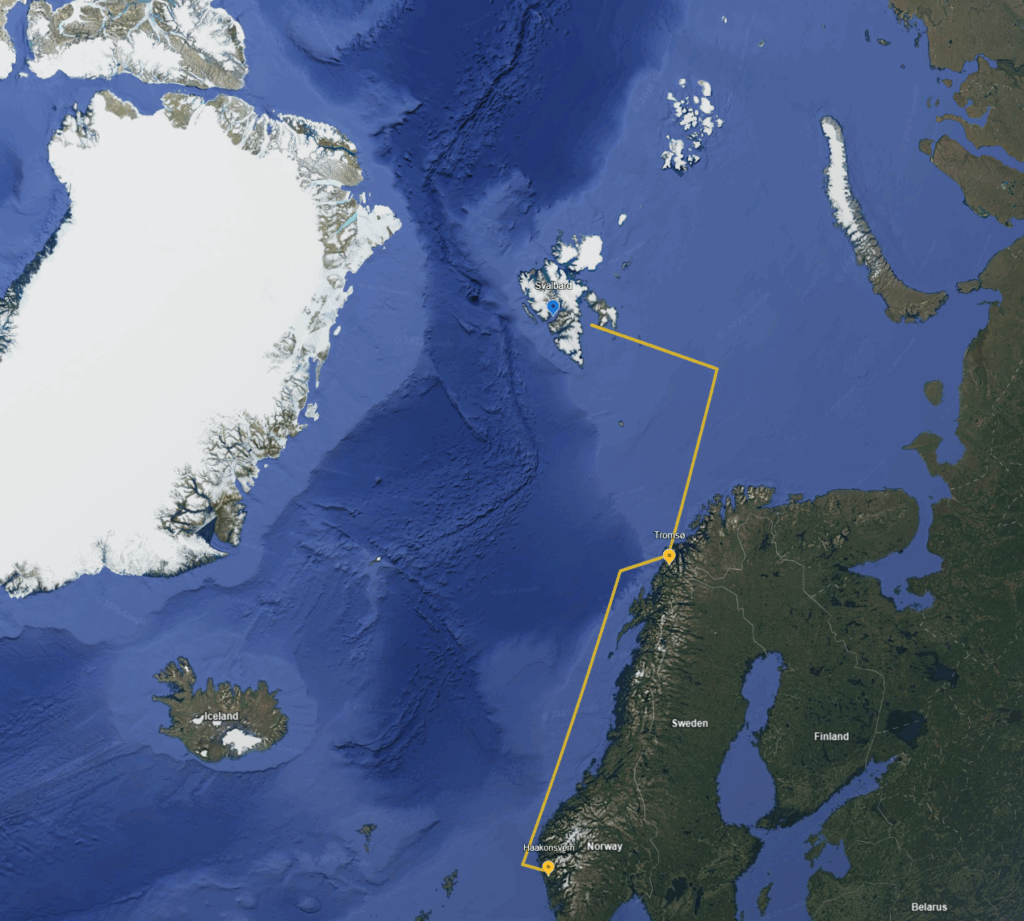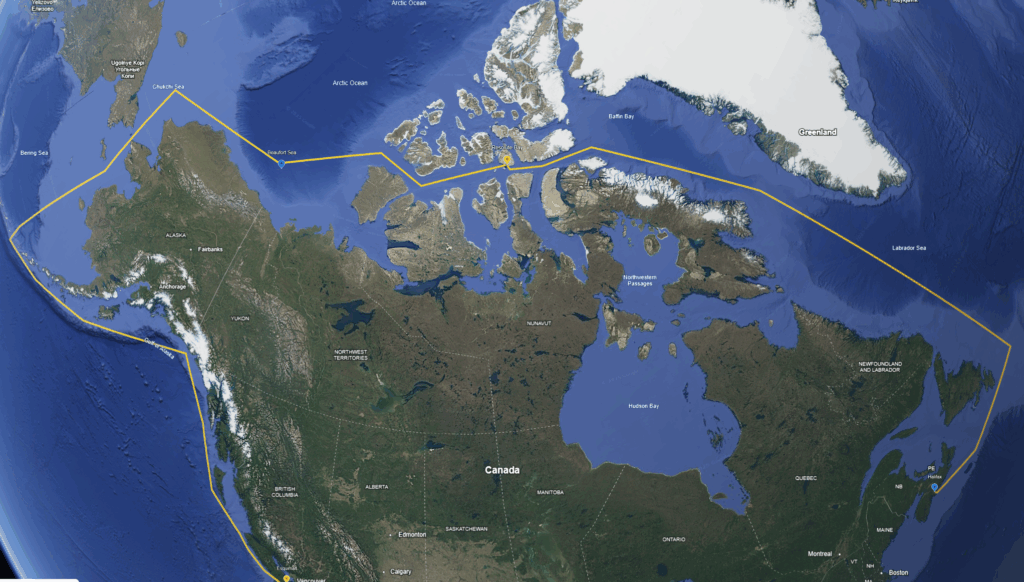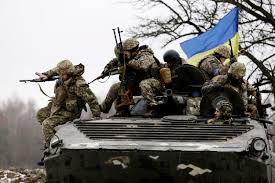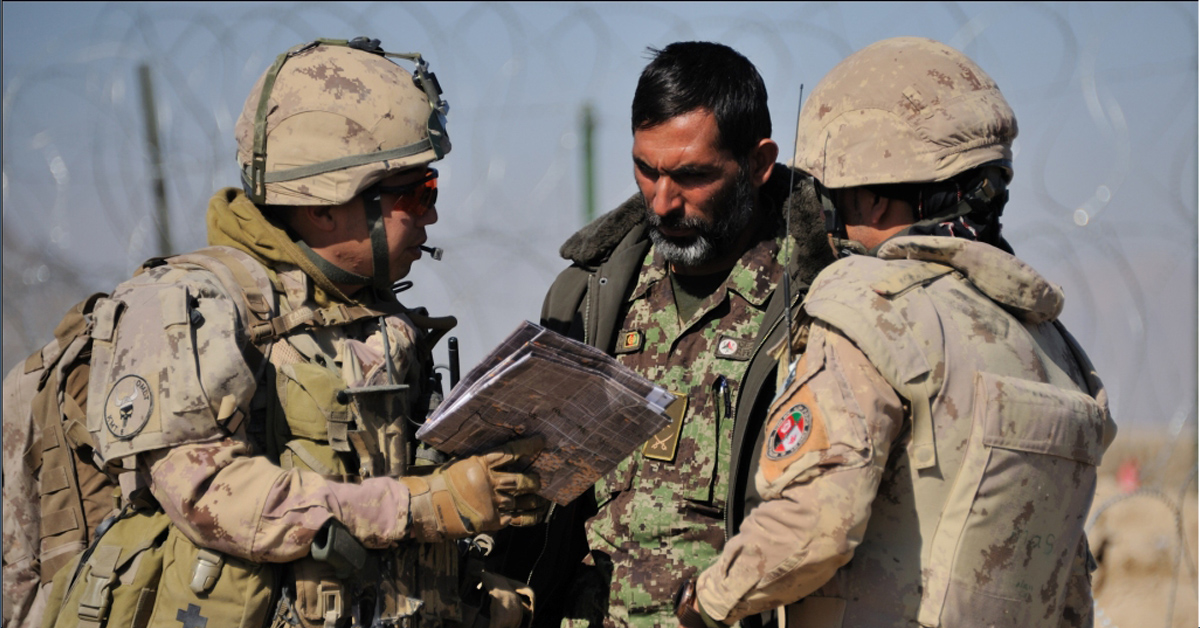The federal government’s 2025 budget has finally been released, and the contents are promising for the Canadian Armed Forces (CAF). Chapter Four of Canada Strong 2025 highlights initiatives the government is taking to safeguard Canada’s sovereignty and security. Russian aggression against Ukraine and China’s growing ambitions of global dominance were cited as primary motivations.
One particularly refreshing passage says: “In this period of great power competition and geopolitical uncertainty, Canadian leadership in the world will be defined not just by the strength of our values, but also by the value of our strength. The significance of this quote cannot be overstated. Finally, the Canadian government is acknowledging that hard power matters and that Canada needs to have some of its own.
As expected, the government promised to re-equip and re-arm the CAF, reaffirming its pledge to meet Canada’s NATO commitment of 2% of GDP spending this year, with an increase of $9 billion. The budget also confirmed the government’s commitment to reach 5% of GDP spending on defence by the mid-2030s.
The government is also finally cracking down on illegal drugs and gun trafficking, hiring 1000 new RCMP police officers and another 1000 CBSA border officers.
“Our Canadian Armed Forces are among the best in the world, and they deserve the capabilities necessary to succeed in an increasingly challenging threat environment.”
The following is a list of planned expenditures over the next five years, as outlined in the budget:
- $81.8 billion over five years on a cash basis, starting this year, to rebuild, rearm, and reinvest in the CAF, which includes the $9 billion mentioned above. This is broken down as follows:
- $20.4 billion over five years to recruit and retain a strong fighting force, including generational pay raises for the CAF, and CAF health care improvements.
- $19.0 billion over five. Years to repair and sustain CAF capabilities and invest in defence infrastructure, including expanding ammunition and training infrastructure.
- $10.9 billion over five years for upgrades to DND, CAF, and CSE digital infrastructure, including those needed for modern warfare, such as cyber defence.
- $17.9 billion over five years to expand Canada’s military capabilities, including investments in additional logistics trucks and armoured vehicles, counter-drone and long-range precision strike capabilities (HIMARS system), and domestic ammunition production.
- $6.6 billion over five years to expand Canada’s defence partnerships, including expanded military assistance to Ukraine and increased military training and international policy programming.
- $805 million over five years to the Canadian Coast Guard, CSIS, Public Services, and Procurement Canada for complementary initiatives to support Canada’s defence capabilities.
Analysis
Unfortunately, the budget document does not provide a detailed breakdown of how the influx of funding will be spent. To put things into perspective, I’ve pulled together all the major procurement announcements I could find over the past five years to try and pain a complete picture of what this increase in funding will mean to the CAF in a real sense. I will cover veterans, the new Defence Investment Agency, and the planned procurements for the Royal Canadian Navy, the Royal Canadian Air Force, and the Canadian Army to provide a more detailed understanding of the equipment Canada’s military will receive over the coming years.

Support for Veterans
The budget also allocated an additional $395 million over six years, starting in 2025-26, to enhance support for veterans and their families. This funding supports continued work on reducing wait times for disability benefits, improving digital service delivery, and expanding case management capacity. The document specifically references ongoing recruitment for frontline VAC staff to maintain timely service delivery for veterans accessing health and income-support programs.
Additionally, the budget allocates $15 million over five years to expand mental health and transition programs, including the Veteran and Family Well-Being Fund. This supports projects focused on suicide prevention, PTSD treatment, and reintegration assistance. There is also mention of continued funding for homelessness prevention initiatives, building on prior allocations from 2023 aimed at ensuring access to housing and support services for at-risk veterans.
A New Defence Investment Agency
The 2025 budget establishes a new Defence Investment Agency (DIA) to overhaul and centralize Canada’s defence procurement system. The move responds to longstanding problems—slow timelines, fragmented responsibilities, and weak coordination between government, industry, and the Canadian Armed Forces (CAF).
The DIA’s mandate is to streamline major procurements, focus investment on strategic defence industries, and strengthen collaboration between the military and domestic suppliers. Its three core goals are: consolidating procurement processes to cut red tape and accelerate project approvals; targeting spending to stimulate key sectors such as aerospace, shipbuilding, and advanced manufacturing; and enabling early, structured engagement between the CAF and Canadian industry to align operational needs with realistic industrial capabilities and timelines.
To launch the Agency, $30.8 million over four years (beginning in 2026-27) and $7.7 million in ongoing annual funding are allocated to Public Services and Procurement Canada. The DIA will manage major defence projects valued at over $100 million, including submarine acquisitions and other high-priority capabilities.
An additional $52.5 million over five years, with $12.2 million ongoing, will modernize and expand the Industrial Security Program to support the Agency’s work and ensure Canada’s defence industry can meet the security and capacity standards required for advanced military production.
In short, the Defence Investment Agency will become the central hub for large-scale military acquisitions, aiming to deliver equipment faster, strengthen Canada’s industrial base, and ensure better value for taxpayers.
This looks like an excellent idea on paper, and if the government can pull it off, it will do much to speed up our horrific procurement process, but there remain risks that need to be managed accordingly. For example, this new agency simply amalgamates familiar actors from other government departments. Similar bickering, infighting, and risk aversion could be brought forward into this new agency if the culture is not managed effectively, which is to say, strong leadership from the top down must ensure that the Defence Investment Agency does not transform itself into yet another self-serving bureaucracy.
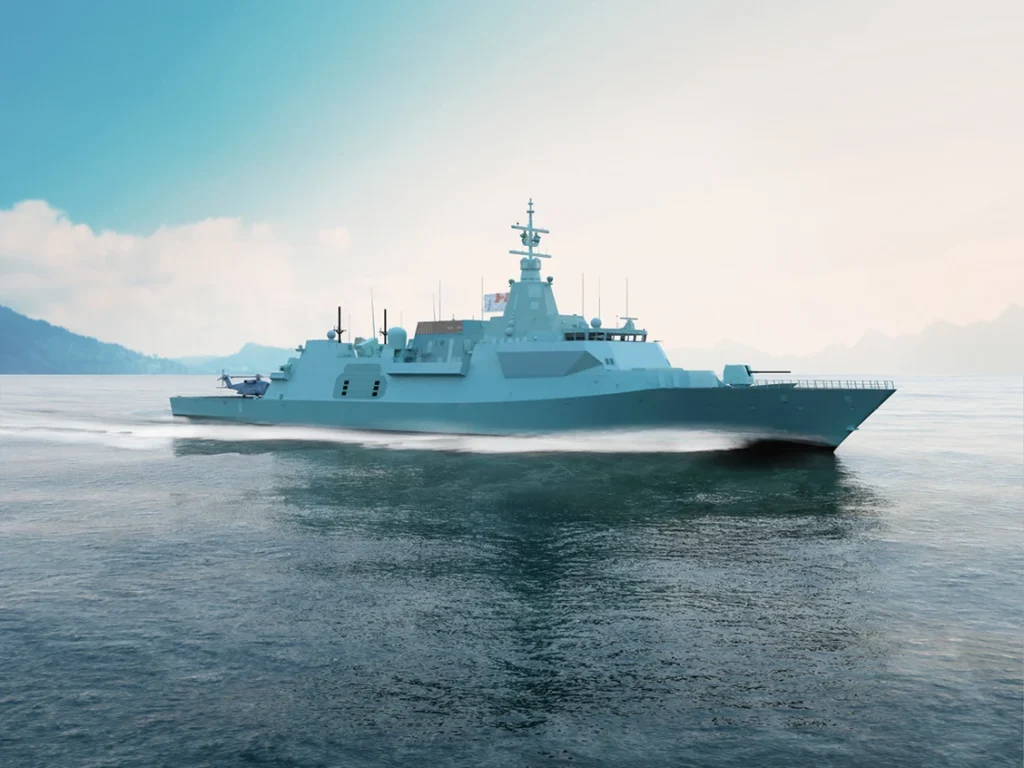
Royal Canadian Navy (RCN)
The 2025 federal budget signals a period of sustained naval modernization for Canada, continuing the long-term transformation that began under the National Shipbuilding Strategy. Over the next decade, the Royal Canadian Navy is positioned to replace or upgrade nearly every class of major vessel it operates, marking one of the most comprehensive renewal efforts in its history.
The Harry DeWolf-class Arctic and Offshore Patrol Ships remain a central feature of this modernization. Designed for Arctic sovereignty patrols, disaster response, and global operations, the six-ship fleet has now reached the final stages of construction. The sixth and final vessel, the future HMCS Robert Hampton Gray, launched in December 2024 and was officially named in August 2025. These ships provide the Navy with a modest ability to operate in Canada’s northern waters for extended periods, partially filling a capability gap that existed for decades. However, these ships don’t have much in the way of weapons system, making them little more then ice strengthened Coast Guard type ships.
Alongside the patrol fleet, the government has advanced the Canadian Surface Combatant program, based on the British Type 26 design, known as the River Class destroyer in Canada. Construction began in 2024, and the first implementation contract was awarded in early 2025 for the initial three ships. Full-rate production is now under way at the Irving Shipbuilding facility in Halifax. When completed, this new class will replace the aging Halifax-class frigates, becoming the backbone of Canada’s surface fleet of 15 destroyers and its most capable combatants. The new River class Destroyer, in my humble estimation will be one of the most formidable destroyers on the high seas when it comes into service. It specializes in anti-submarine warfare (ASW), packs a robust air defence system, enhanced sensors, and much more firepower than the Halifax class frigates.
The Protecteur-class Joint Support Ships are also progressing steadily. Built at Seaspan Shipyards in Vancouver, these large replenishment vessels will restore Canada’s global at-sea resupply capability, which was lost when the Protecteur and Preserver auxiliary ships were retired. The first of the new ships is scheduled for delivery in 2026, with the next in 2027, re-establishing a crucial logistics link for international deployments and humanitarian missions.
The new Protecteur-class Joint Support Ships represent a major advancement over the two auxiliary oiler replenishment vessels they replace, the original HMCS Protecteur and HMCS Preserver. The previous ships, launched in the late 1960s, had limited replenishment capacity, minimal self-defence capability, and aging propulsion systems that restricted global deployments. The new class is larger, faster, and more versatile, combining fuel and supply functions with advanced command, control, and medical facilities that allow the ships to support fleet operations and humanitarian missions worldwide. Modern propulsion and automation systems reduce crewing demands and increase range and endurance, while integrated defensive sensors and weapon mounts significantly enhance survivability. Designed to NATO standards and built to support both Arctic and blue-water operations, the new Protecteur-class restores a sovereign at-sea replenishment capability and adds far greater flexibility, endurance, and safety to the Royal Canadian Navy’s global missions.
Perhaps the most strategically significant announcement came in 2024 with the Canadian Patrol Submarine Project, which initiates the process of acquiring up to 12 conventionally powered, under-ice-capable submarines. The new boats are intended to replace the Victoria-class fleet and will extend Canada’s surveillance and deterrence reach into Arctic and North Atlantic waters. The project is moving along quickly, with the list of potential submarines down to two: the German-Norwegian type 212CD, and the South Korean KSS III Batch II. Either choice represents a robust leap forward in naval combat capability, and the government may select a winner by the end of the year.
The Navy is also preparing for a generational transition in its coastal forces. The Kingston-class Maritime Coastal Defence Vessels, which have served since the mid-1990s, will begin retiring in 2025, with the process continuing through 2028. While the government has not yet announced a formal replacement program, planning is underway for a future class of multi-mission corvettes capable of mine countermeasures, coastal patrol, and intelligence collection.
Together, these programs represent a sweeping renewal of the Royal Canadian Navy’s fleet, ensuring that Canada will possess modern, flexible, and globally deployable maritime capabilities. From Arctic patrols to deep-water combatants and future submarine operations, the budget continues to prioritize naval readiness and the protection of Canada’s maritime interests.
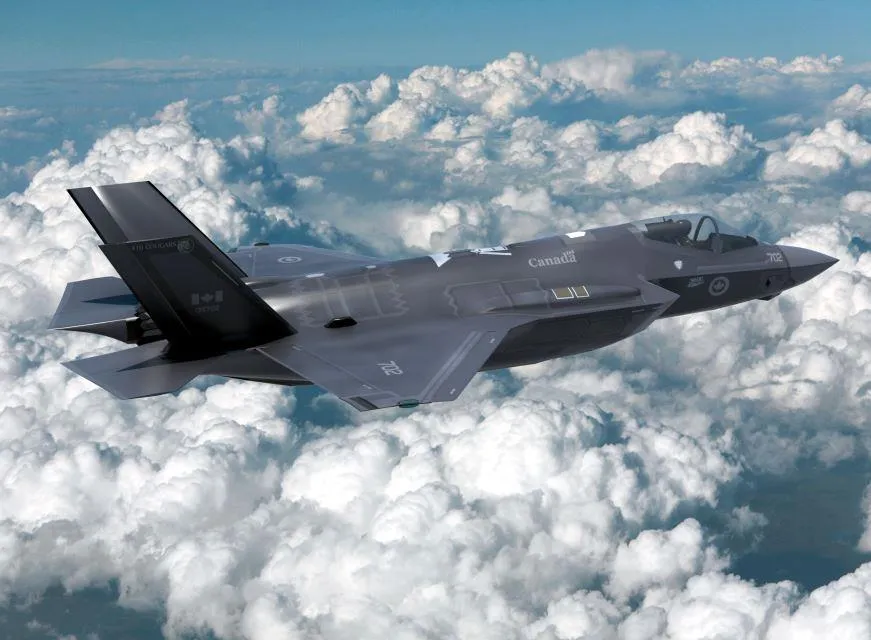
The Royal Canadian Air Force (RCAF)
Ottawa’s fighter recapitalization remains the centrepiece. Under the Future Fighter Capability Project, Canada is procuring 88 F-35A aircraft with associated weapons, infrastructure, training, and sustainment. The package is positioned as the most significant RCAF investment in more than three decades and will restore a modern, interoperable fighter fleet. Though the prime minister has ordered a review of the program, I believe this to be something Mr. Carney can use as a bargaining chip, rather than cancelling the project. A cancellation would cause more harm to Canada-US relations, and further degrade our ability to safeguard Canada’s airspace. Many have begun advocating for the Saab Grippen E/F, which is a capable aircraft to be sure. But starting over on fighter procurement, again, would delay the acquisition of new fighters. And let’s not forget that the F-35A is the most technologically advanced, and capable fighter in the world. For these reasons, I believe that Canada will end up honoring its contract to purpose the full 88 fighters.
Maritime patrol and anti-submarine warfare are being renewed through the Canadian Multi-Mission Aircraft project. The government has finalized a government-to-government agreement to acquire up to 16 Boeing P-8A Poseidon aircraft. The scope covers spares, training devices, support equipment, mission support centres, weapons, infrastructure, and initial in-service support.
Strategic air-to-air refuelling and transport are being replaced under the Strategic Tanker Transport Capability project. Canada is acquiring nine CC-330 “Husky” aircraft, a mix of new-build and used A330-200 airframes converted to the MRTT standard. The fleet will assume refuelling, strategic lift, aeromedical evacuation, and VIP transport duties as the CC-150 Polaris retires.
Remotely piloted air power is entering service at scale. The government has launched a multibillion-dollar acquisition of an RPAS capability from General Atomics, including 11 MQ-9B SkyGuardian aircraft and six ground control stations. Production updates show the first Canadian airframes moving through the line.
Search and rescue aviation is being modernized on two fronts. The CH-149 Cormorant Mid-Life Upgrade extends the service life of Canada’s AW101 SAR fleet with new avionics and mission systems, paired with an augmentation that draws on VH-71 airframes and components. In parallel, the CC-295 Kingfisher fixed-wing SAR fleet continues to enter service, bringing a modern sensor suite to nationwide SAR operations.
Tactical rotary-wing support is being sustained through the Griffon Limited Life Extension. The project upgrades 85 CH-146 Griffon helicopters with avionics, engines, displays, and mission equipment to keep the fleet viable to at least 2031 while preserving domestic industrial work.
Aircrew training is being overhauled under a consolidated, long-term service contract. The government awarded SkyAlyne a 25-year, multi-billion-dollar Future Aircrew Training program that will provide aircraft, simulators, classrooms, instructors, and in-service support, replacing multiple legacy arrangements and scaling output for pilots and mission specialists across RCAF fleets.
The air domain awareness backbone that underpins continental defence is also being renewed through NORAD modernization. Canada has outlined a 20-year plan valued in the tens of billions to field new long-range surveillance, command-and-control, and weapons system upgrades. A cornerstone is the Over-the-Horizon Radar portfolio, with the first Arctic OTHR transmit and receive sites announced, complemented by a Polar OTHR that extends coverage into the High Arctic. Together with modernized command systems and interceptor upgrades, these projects strengthen detection, tracking, and deterrence against evolving aerospace threats.

Canadian Army
The Army is renewing its basic soldier system and personal equipment through several overlapping initiatives intended to improve survivability, situational awareness, mobility, and sustainment. The Integrated Soldier System Project will field wearable communications suites, position and navigation aids, power solutions, and associated accessories to thousands of dismounted soldiers, improving voice and data connectivity from the individual up to company level. Parallel clothing and personal kit modernization programs have refreshed cold weather and expeditionary collections, introduced next-generation ballistic helmets and load carriage systems, upgraded protective CBRN gear and flotation devices, and delivered a range of new patrol packs, sleeping systems and individual mission accessories. The Canadian Modular Assault Rifle program has been defined to replace the legacy C7/C8 family and rationalize the rifle fleet; planning calls for a modern modular rifle family sized to meet peacetime, reserve and surge requirements across the force. Short term procurements in recent years additionally brought in replacement pistols, improved squad weapons and sniper systems, and incremental optics and fire control upgrades across weapon families.
Mobility and logistics modernization is anchored by the Logistics Vehicle Modernization program, which will deliver a new fleet of thousands of light and heavy trucks, trailers, containers and mission modules to standardize national transport, resupply and recovery capability. The LVM acquisition includes more than a thousand light tactical trucks and several hundred heavy logistics platforms with options for armoured protection kits, modular payloads and integrated sustainment. Complementing LVM, the Armoured Combat Support Vehicle program is replacing legacy tracked and older wheeled platforms with a fleet of LAV-based ACSVs to provide ambulance, recovery, engineering, mobile repair and command post variants. These platforms will align vehicle fleets, simplify training and maintenance, and extend protected mobility across domestic and expeditionary tasks. Tactical Armoured Patrol Vehicles remain in service as the Army’s patrol and reconnaissance wheeled fleet, while existing light utility and G-Wagon fleets continue to be refreshed for liaison and light mobility roles.
Armour and tracked capability is being preserved and sustained through a combination of upgrades and long-term in-service support. Canada’s Leopard 2 tank fleet has been subject to an extended maintenance and sustainment contract to ensure readiness, while engineering and recovery variants based on tracked chassis are being modernized to preserve manoeuvre and force protection on high-intensity battlefields. The LAV family remains central to mechanized formations; ongoing work refines and expands LAV 6 and related variants to carry mortar, command and combat functions, and the Armoured Combat Support Vehicle deliveries are already replacing older Bison and M113 variants in many units.
Indirect fires and artillery have been repositioned as a high priority. The Indirect Fires Modernization program moves the Army away from a predominantly towed artillery posture toward a mobile, self-propelled architecture. Procurement planning and industry engagements envision the acquisition of a battery-level, modern 155mm self-propelled howitzer capability in substantial numbers to replace the existing M777 towed guns, together with integrated mortar systems sized for both heavy and light tactical vehicles. This change will increase mobility, responsiveness and protection for fire units and is expected to include new ammunition stocks, fire control systems and training packages.
Canada has formally committed to acquiring a land-based long-range precision strike capability. The project appears in official defence planning as the Long Range Precision Strike (Land) project and the government’s 2024 defence vision allocates funding for long-range land missiles, with a program envelope announced at about CAD 2.7 billion over 20 years to acquire long-range missile capabilities that can give Canadian forces reach beyond that of potential adversaries.
Work to deliver that capability has progressed along two complementary tracks. First, Defence officials have indicated the project will seek a layered, treaty-compliant, precision strike effect at operational ranges, which points toward launchers such as the M142 HIMARS family and associated munitions like GMLRS and extended-range variants, and toward multi-hundred-kilometre missiles being considered in allied procurement conversations.
In October 2025 a U.S. congressional notification cleared a proposed Foreign Military Sale for Canada covering M142 HIMARS launchers and a package of rockets and missiles, indicating Canada is moving to acquire launchers and munitions capable of delivering long-range precision fires. That notification is consistent with the Long Range Precision Strike (Land) project and signals operational choices the government is actively considering.
The combination of new 155mm self-propelled howitzers, mortars, and long range strike capability will give the Canadian Army a devastating level of firepower it can bring to bear against adversary forces.
Air defence is undergoing multi-layered renewal. Urgent operational purchases in recent years provided short-range missiles and counter-UAS kits to protect deployed units, while the Ground Based Air Defence program is in a formal project definition phase to deliver an integrated tactical GBAD capability able to counter rockets, artillery, mortars, cruise missiles and unmanned threats. The Army’s short-range surface-to-air purchases include modern man-portable and vehicle-mounted systems for expeditionary duty, and procurement planning contemplates layered sensors, shooters and command elements to be deployed both domestically and on NATO commitments.
Sensors, reconnaissance and command support are being modernized across a suite of programs. The Land Intelligence, Surveillance and Reconnaissance Modernization project will standardize battlefield sensors, improve data dissemination and introduce new electro-optical, radar and electronic support systems to expand organic sensing at brigade and battalion levels. The Land Command Support System and associated tactical communications programs will replace and upgrade the Army’s brigade-to-soldier command and control networks, fielding modern radios, secure data networks, ruggedized command nodes and the software tools required to fuse and disseminate real-time battlefield information.
Force protection, counter-IED and support engineering equipment are receiving attention through fielded procurements and upgrades. Modern mine clearing, route clearance, and engineer mobility equipment are being acquired or refreshed to support both domestic disaster response and high-intensity expeditionary operations. Recovery, workshop and forward repair capabilities are being embedded in vehicle and unit modernization programs to improve operational endurance.
Training and sustainment frameworks are being reformed to match new equipment. Investments include large in-service support contracts, expanded domestic maintenance arrangements for major platforms, and industry partnerships intended to sustain fleets over their lifecycle. The Army is also pursuing virtual and live training systems to speed platform transition, support doctrine development and improve combined arms integration with newly procured systems.
A range of niche and enabling items round out the procurement picture. These include multi-purpose engineering systems, bridging and watercraft for littoral operations, upgraded mortar systems integrated onto wheeled platforms, battlefield electronic warfare and signals intelligence suites for brigade combat teams, enhanced medical evacuation and aeromedical packages, and expanded cold-weather mobility kits tailored to Arctic operations.
Taken together, these announced programs represent a comprehensive refresh of the Army’s materiel baseline. The combined effect is intended to deliver a more mobile, survivable and sensor-rich land force capable of operating from high-intensity continental defence to NATO expeditionary commitments and Arctic sovereignty tasks. Many projects are already moving from concept and options analysis into requests for information and contracting phases; others remain in definition and will be refined as capability requirements, industrial options and budgets are finalized.
Conclusion
For the first time in decades, Canada appears to be taking its own defence seriously. This budget marks a turning point, not only in rhetoric but in substance. The government is matching its promises with real investment, addressing decades of neglect across every branch of the Canadian Armed Forces. Procurement reform, large-scale re-equipment, and sustained funding for personnel and veterans all signal a genuine recognition that national security requires more than diplomacy and goodwill—it requires capability. The establishment of the Defence Investment Agency, combined with sweeping modernization programs across the Navy, Air Force, and Army, demonstrates that Ottawa is finally building the foundations of credible hard power. Canada’s allies will take notice, and so too will those who would test its resolve. For the first time in a generation, the future looks promising. Canada is beginning to stand up for itself again—strong in principle, and now, increasingly, strong in power.
That said, we have seen big promises before, only for them to be rolled back or deferred in later budgets. While that remains a risk here, something tells me that increasing defence spending is one area Prime Minister Carney is genuinely committed to. For that reason, I remain hopeful that this time will be different—that Canada will finally follow through.
And for those considering a life of service, there has never been a better moment to join the Canadian Armed Forces. The country is rebuilding its strength, and those who step forward now will be part of shaping its future.


